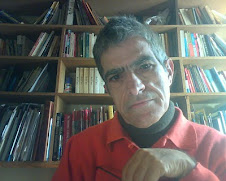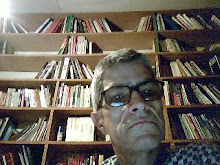6.4.15
Os judeus Lemba da África Austral
The Lemba are an allegedly Jewish people in southern Africa, many living in modern day Zimbabwe, Malawi and South Africa. The community as a whole numbers close to 70,000. Although they speak the same Bantu languages as their African neighbors, some of the Lemba’s religious practices are similar to those in Judaism. Their tradition suggests they may have migrated to Africa from the Jewish communities in Yemen.
Though the Lemba may be descended from Jewish ancestors, they have not practiced Judaism for many centuries. Lately, some have wanted to shift towards mainstream Judaism. Today, many Lemba are Christians or Muslims.
Some of the Lemba beliefs and practices that are similar to Judaism include the following:
◾They are monotheists (they call their creator God Nwali).
◾They hold one day of the week to be holy and praise Nwali (similar to the Jewish Shabbat).
◾They praise Nwali for looking after the Lemba, considering themselves a chosen people.
◾They teach their children to honor their mothers and fathers.
◾They refrain from eating pork or other foods forbidden by the Torah, or forbidden combinations of permitted foods.
◾Their form of animal slaughter, which makes meats fit for their consumption, resembles Jewish shechita.
◾They practice male circumcision (models of circumcised male organs were found at Great Zimbabwe).
◾They place a Star of David on their tombstones.
◾Lembas are discouraged from marrying non-Lembas, as Jews are discouraged from marrying non-Jews.
◾Lemba bury their dead in an extended rather than a crouched position.
Possible Lemba migration to southern Africa
According to the oral history of the Lemba, they had male ancestors who were Jews who left Judea about 2,500 years ago and settled in a place called Senna, later migrating into East Africa. According to the findings of British researcher Tudor Parfitt, Professor of Oriental and African Studies at the University of London, the location of Senna was more than likely in Yemen, specifically, in the village of Sanāw, which had a vibrant Jewish population since ancient times, but dwindled to a few hundred people since the establishment of the State of Israel in 1948.
After entering Africa, the tribe is said to have split off into two groups, with one staying in Ethiopia, and the other traveling farther south, along the east coast. The Lemba claim this second group settled in Tanzania and Kenya, and built what was referred to as “Sena II.” Others were said to have settled in Malawi, where descendants reside today. Some settled in Mozambique, and eventually migrated to South Africa and Zimbabwe, where they claim to have constructed or helped construct the “great enclosure.”
The Lemba prefer their children to marry other Lembas, with marriage to non-Lembas being discouraged. The restrictions on intermarriage with non-Lemba make it particularly difficult for a male non-Lemba to become a member. A woman who marries a Lemba male must learn the Lemba religion, dietary rules and other customs. She may not bring any cooking equipment from her previous home, as it may have been tainted by inappropriate use. Her children must also be brought up as Lembas.
Lemba and “the Drum that Thunders”
Lemba tradition tells of a sacred object, the ngoma lungundu or “drum that thunders”, that was brought with them from Yemen. Tudor Parfitt has theorized that it was the Ark of the Covenant, lost from Jerusalem after the destruction by Nebuchadnezzar in 587 BC. In a U.K. Channel 4 television program, Parfitt claimed he had traced a missing copy of the artifact to a museum in Harare, Zimbabwe. Radiocarbon dating showed it to be over 600 years old, and Parfitt suggested that it was a replica made while the Lemba were in Yemen, after the original Ark had been destroyed.
The American PBS television broadcast a documentary based on Dr. Parfitt’s work on its NOVA program. There is a written report from the NOVA program, including a brief interview with Dr. Parfitt and NOVA team member David Goldstein on the findings here. A longer, more comprehensive interview by the NOVA team with Parfitt can be found here.
DNA Testing
From Wikipedia: A genetic study in 1996 suggested that more than 50% of the Lemba Y-chromosomes are Semitic in origin; a subsequent study in 2000 reported more specifically that a substantial number of Lemba men carry a particular haplotype of the Y-chromosome known as the Kohanim modal haplotype (CMH), as well as, a haplogrup of Y-DNA Haplogroup J found amongst some Jews and in other populations across the Middle East. Studies have also suggested that there is no Semitic female contribution to the Lemba gene pool.
One particular sub-clan within the Lemba, the Buba clan, is considered by the Lemba to be their priestly clan. The Buba clan carried most of the CMH found in the Lemba. Among Jews the marker is also most prevalent among Jewish Kohanim, or priests. As recounted in Lemba oral tradition, the Buba clan “had a leadership role in bringing the Lemba out of Israel” and into Southern Africa.
Assinar:
Postar comentários (Atom)



Nenhum comentário:
Postar um comentário